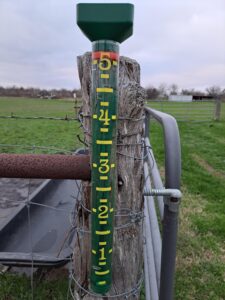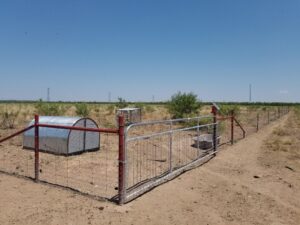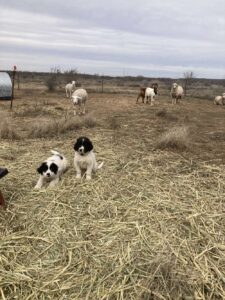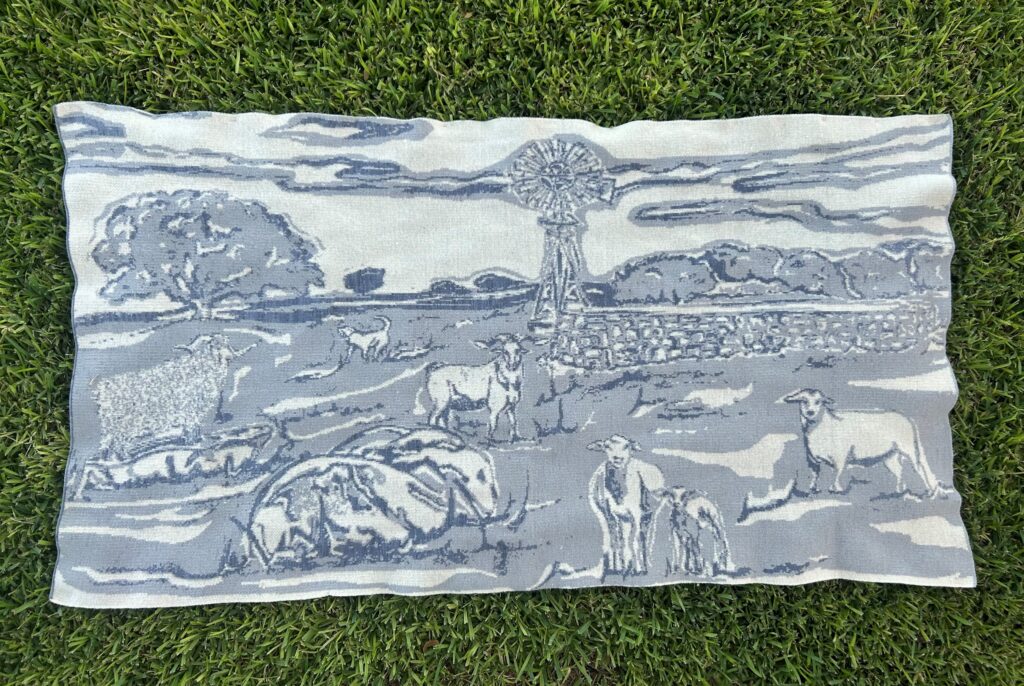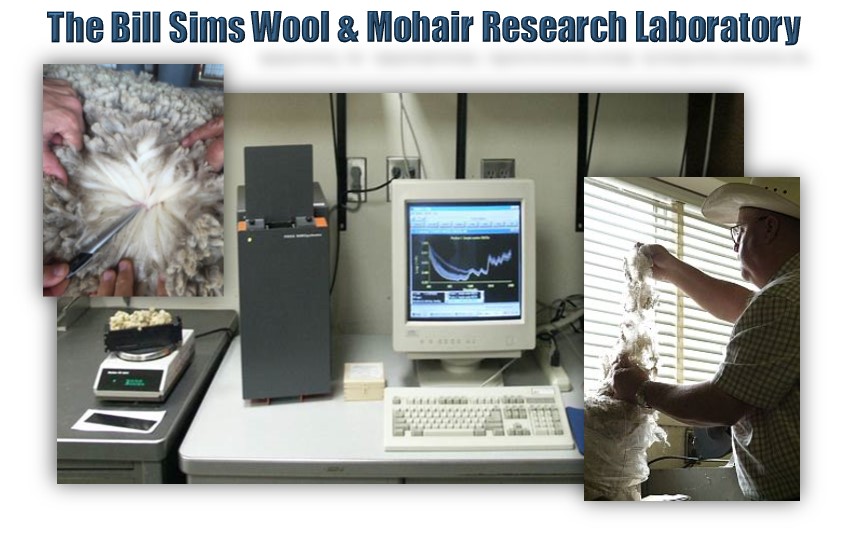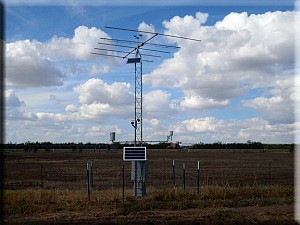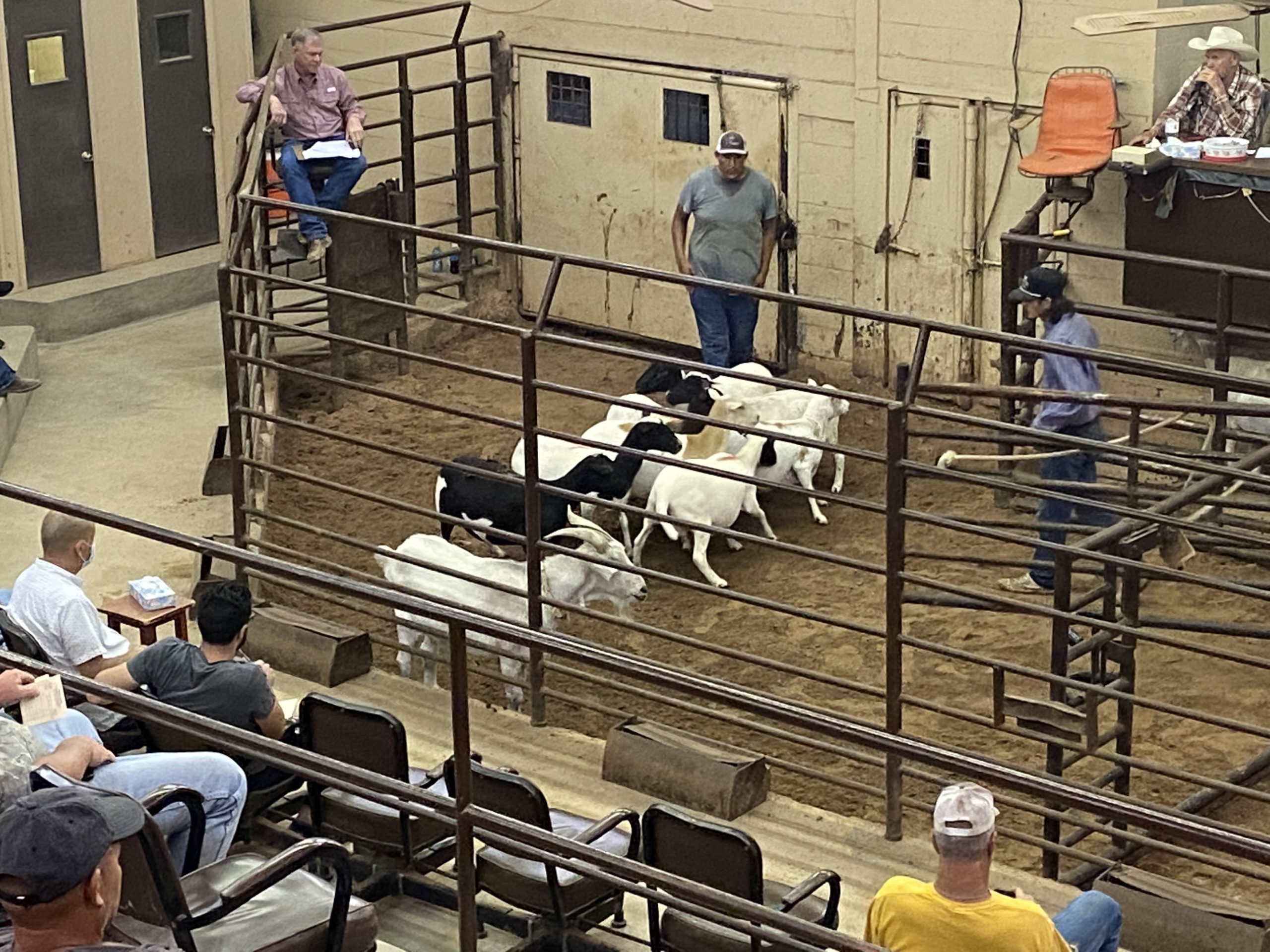Rain has been falling regularly across the state’s eastern side, which is a welcome sight for ranchers. We received over 5 inches of rain in one day, which caused a lot of flooding and mud to deal with afterward. This is a good problem to have for thirsty pastures. I hope that these rain events will occur in all regions of the state.
AgriLife Livestock Guardian Dog Program: Update and Events
Our next event will be our annual LGD Field Day on April 26. from 8 a.m.-4 p.m. at the AgriLife Center in San Angelo. In 2024, we will be moving to only one field day hosted by the LGD program, which will be held at the Center in San Angelo. This should allow us to provide a better variety of speakers and a set month and location that ranchers can plan for each year. You can register for the field day on the AgriLife Events page. We also work closely with county extension agents to provide LGD presentations and updates at their local county meetings.
LGD Bonding Procedures
We often get asked how we bond livestock guardian dog puppies and how the pens are designed. Ranchers do not have to have pens designed like ours, but square footage is essential to allow pups to burn off playful energy without hurting livestock. Single-bonded pups in hot wire pens have roamed the least as adults, followed by pair-bonded pups in hot wire pens during the bonding project. Here is a list of steps we follow for each round of pups.
- Acquire a well-bred 8-week-old pup from a reputable breeder that meets the ranch’s needs.
- Place the pup immediately into a bonding pen with a hot wire and 4-6 head of livestock. Our pens are approximately 60’ x 60’ in size. Yearling animals work best for the first month, then replace them with fully mature ewes/nannies.
- Ensure the puppy has a safe area to retreat into if bullied. Bullied pups will become aggressive towards livestock. They should have feed but no water in the safe space. A panel across the pen corner works well or use a feeding station the livestock cannot enter to train the pup to use it with a self-feeder.
- Make sure to fully vaccinate, deworm, ID chip, and provide flea and tick medication regularly as recommended by a veterinarian.
- Socialize, leash train, tether train, and provide truck rides three to four times a week for approximately 15 minutes until the pups are six months old. Dogs at six months old should be able to walk on a leash for five minutes straight and remain calmly tethered for at least 20 minutes.
- Keep pups in this 60’ x 60’ area for one month.
- Next, move the pup and livestock to a one-acre pen with hot wire. Add a few more head for the pup to guard during this time. Continue
the training listed in number four. Ranchers licensed to use M44s may train pups during this time.
- Keep the puppy in the one-acre pen with livestock until they are six months old. Remember to rotate livestock out every three to four weeks so the puppy bonds to a species and not a set group of animals.
- Next, move puppies and livestock to a small trap of 25-50 acres until they are 10 months of age. Add more livestock of different ages, or use rams/billies in this trap. If observed, try correcting rough play or chasing with a dangle stick or drag. Invisible fence collars may be needed to continue teaching fence respect.
- Spay and neuter all pups at 10 to 11 months to prevent roaming and unwanted pregnancies. Producers should continue to monitor rough play and other teenage behaviors.
- Next, move pups into a small pasture with closely monitored animals until the dogs are 18-24 months of age. Ranchers should continue to monitor for rough play and other teenage behaviors. Invisible fence collars may be needed to continue teaching fence respect. Shock collars may be needed if teenage behaviors have not stopped with other correction methods.
- Dogs are adults at 24 months of age. Dogs that are not working correctly at this time are failures and should become pets. Until they are adults, a producer cannot know if the dog will turn into a good LGD!
We hope this list helps everyone better understand how we bond and train the puppies in our project. Feel free to reach out via email at bill.costanzo@ag.tamu.edu with any questions or comments.
Bonding Project Update
Round Five Dogs
The pups in round five are all doing well. Belle has been doing well at her new ranch with mature Angora goats. All the pups were scored for socialization last month. Overall, everyone scored well. We have seen some scores drop at the 12-month mark in the past and then rise again at 18 months of age. We will have to wait and see how this round turns out. A couple of the dogs have been patrolling outside their boundaries, short distances, but they have always returned to their livestock. Some of these alerts could be tracker drift, as we have seen stationary trackers drift over 35 feet in the past. During these alerts, we are working with producers to verify whether the dogs have left the pastures.
Round Six Dogs
We received all six puppies last month for the next round of the bonding project. Three puppies are purebred Anatolian Shepherds, and the other three are Karakachans. The Anatolian puppies will be Santa’s Reindeer pups (Dasher, Comet, and Blitzen). The Karakachan pups will be the “L” Girls (Lilly, Lulu, and Lady). The puppies will all continue to be single, or pair bonded with all pups in hot wire pens for this round. We will look at the dogs’ socialization levels during this round. The Santa’s Reindeer pups will be socialized thrice weekly, while the “L” Girls will only be socialized once weekly. This will be the only round to have these criteria.
In closing
If you enjoyed this monthly LGD blog, please don’t forget to subscribe to it with this link: The Guardian Way | Texas A&M AgriLife Research and Extension Center at San Angelo.
To provide feedback on this article or request topics for future articles, please contact me at bill.costanzo@ag.tamu.edu or 325-657-7311.
The Texas A&M AgriLife Livestock Guardian Dog Program is a cooperative effort by Texas A&M AgriLife Research and the Texas Sheep and Goat Predator Management Board. Follow us on our social media sites and share them with your friends and family!
Facebook, Instagram, YouTube: @TAMUlivestockguarddog
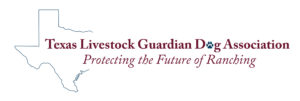 Do not forget to check out the Texas LGD Association online! Follow the organization on Facebook or YouTube at @TexasLGDAssociation, or check out their website.
Do not forget to check out the Texas LGD Association online! Follow the organization on Facebook or YouTube at @TexasLGDAssociation, or check out their website.

